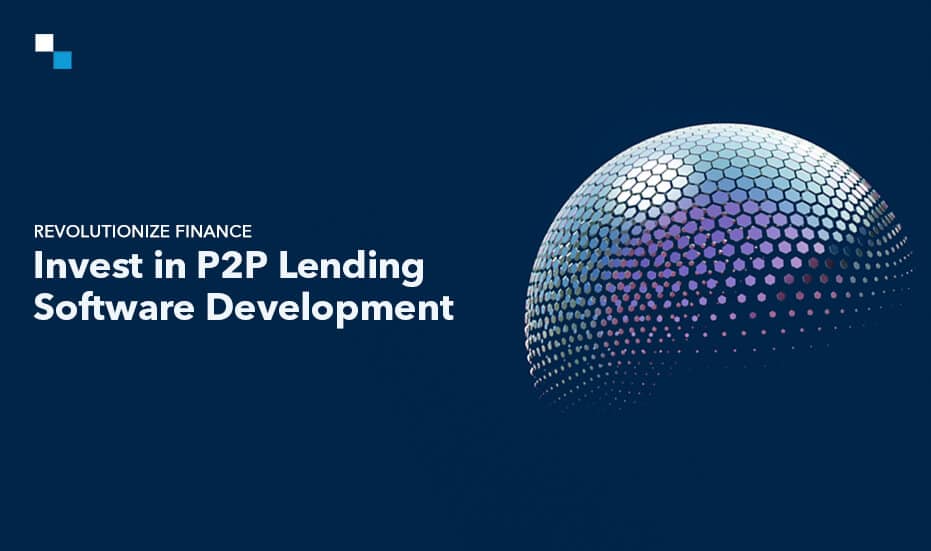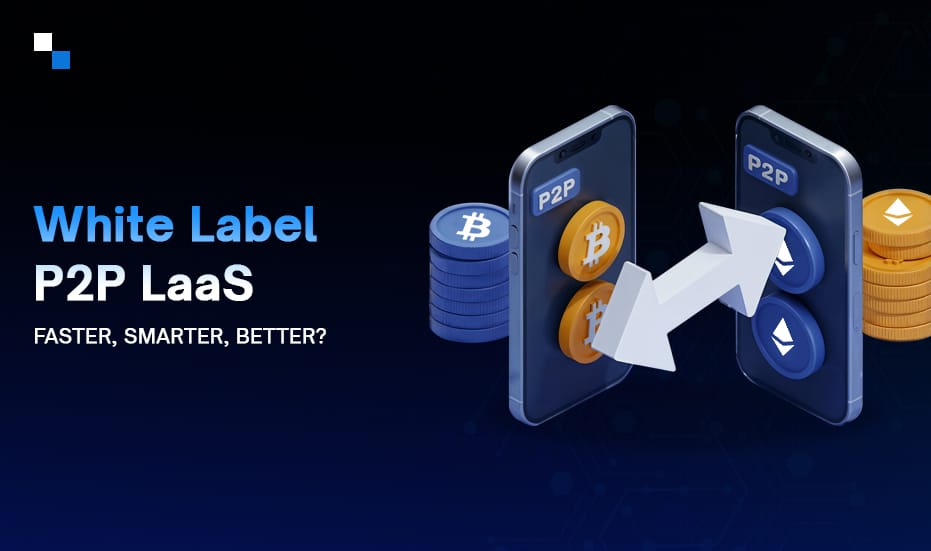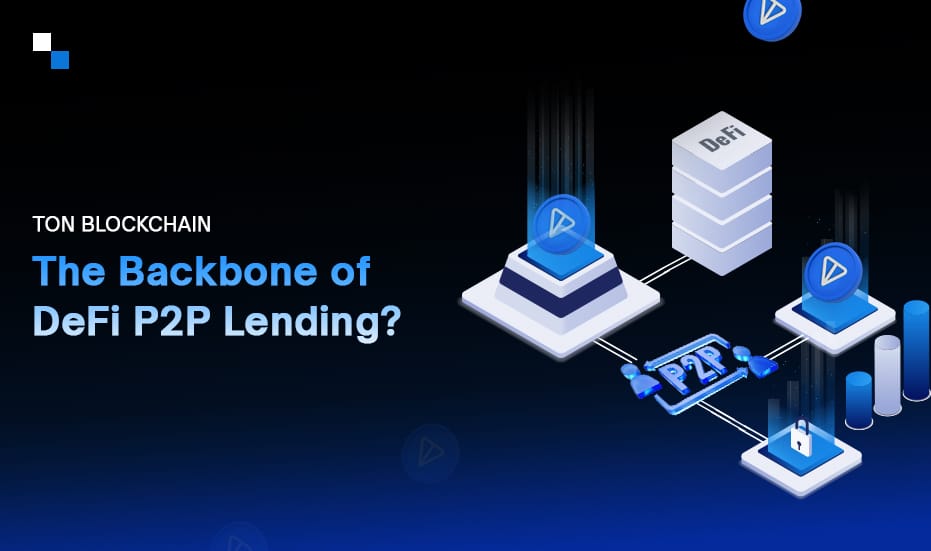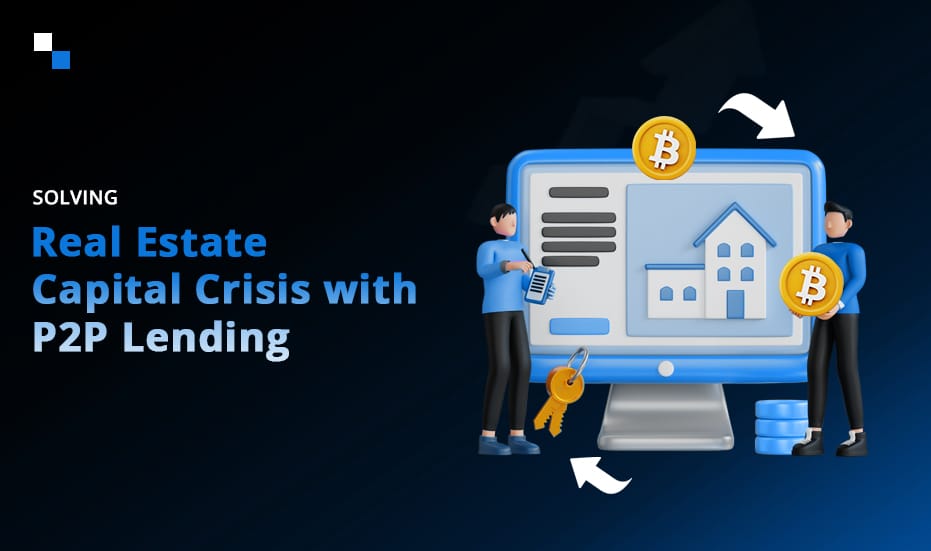
Understanding the Role of Order Matching Engine in a Centralized Crypto Exchange
January 19, 2024
Exploring NFT Integration in ICO Development For Optimal Fundraising
January 22, 2024In today’s digital age, peer-to-peer (P2P) lending has emerged as a game-changer in the financial industry. Peer to Peer Lending Platform Software connects borrowers directly with lenders, eliminating the need for traditional banks or financial institutions. As a result, different industries have recognized the immense potential of building their own P2P lending platform software. This article explores how building a P2P lending platform software can benefit various industries and revolutionize the way they operate.
How Does P2P Lending Work?
Before delving into the advantages, it’s essential to understand how P2P lending works. P2P lending platforms act as intermediaries, facilitating the lending process between borrowers and lenders. These platforms employ comprehensive algorithms and data analysis to match borrowers with suitable lenders based on their loan requirements and risk profiles. The entire process is carried out online, ensuring convenience, speed, and transparency.
1. Transforming the Real Estate Industry
The real estate industry heavily relies on financing for various projects. However, traditional avenues for obtaining loans often involve complex paperwork, lengthy approval processes, and high interest rates. By developing a P2P lending platform software, the real estate industry can streamline these processes and make them more accessible.
Investors can directly lend funds to real estate developers through the platform, reducing the dependence on banks or financial institutions. This eliminates the need for excessive paperwork, accelerates funding timelines, and ensures competitive interest rates. As a result, both developers and investors can benefit from simplified transactions and faster project completion.
2. Revolutionizing Small Business Financing
Small and medium-sized enterprises (SMEs) often struggle to secure financing through traditional channels. Banks may be reluctant to lend to these businesses due to perceived risks and stringent eligibility criteria. However, P2P lending platforms offer an alternative solution, enabling SMEs to access capital for growth and expansion.
By creating a Peer to Peer Lending Platform Software, different industries can support small business financing. Entrepreneurs can easily apply for loans through the platform, provide necessary documentation, and connect with potential lenders. This allows SMEs to bypass the lengthy approval processes associated with traditional financing methods, ensuring faster access to funds. Furthermore, P2P lending platforms often offer competitive interest rates, making them an attractive option for small businesses.
3. Enhancing Consumer Loans
Apart from businesses, P2P lending platforms can also benefit individuals seeking personal loans. Whether it’s for education, medical expenses, or debt consolidation, individuals often face challenges in securing loans from banks. Using a P2P lending platform software presents an opportunity to address these challenges and provide individuals with more accessible loan options.

Borrowers can connect with multiple lenders simultaneously through the platform, which increases their chances of securing a loan. The automated matching process ensures personalized loan offers based on borrowers’ unique needs and risk profiles. This streamlined approach simplifies the borrowing process and enables individuals to obtain loans at competitive interest rates, without enduring extensive paperwork or delays.
4. Agriculture and Farming
In the agricultural sector, Peer to Peer Lending Platform Software can play a crucial role in supporting farmers and addressing their financial needs. Farmers often require capital for equipment purchases, land expansion, or to mitigate risks associated with unpredictable weather conditions. By connecting with individual lenders through a P2P lending platform, farmers gain access to flexible funding options, fostering growth and sustainability in the industry.
5. Education and Student Loans
The rising costs of education and the difficulty in obtaining student loans have posed challenges for aspiring students. P2P lending platform software can bridge this gap by connecting students directly with lenders willing to finance their education. Building a P2P lending platform catering to the education sector can simplify the loan application process, offer competitive interest rates, and provide new opportunities for students to pursue their educational goals.
Key Considerations for P2P Lending Platform Software Development
Several key considerations must be taken into account before developing a Peer to Peer Lending Platform Software. Here are the main points to focus on:
- Security: Implementing robust security measures to protect users’ personal and financial information is paramount. Incorporating encryption protocols, two-factor authentication, and regular security audits will enhance the overall safety of the platform.
- Scalability: Anticipate future growth and design the software to handle increasing user demands. Building a scalable infrastructure will allow for easy upgrades and improvements as the platform expands.
- User-Friendly Interface: Creating an intuitive and easy-to-use interface is essential for attracting and retaining users. By prioritizing simplicity and clear navigation, users will have a seamless experience when lending or borrowing funds on the platform.
- Compliance with Regulations: Ensure that the software aligns with relevant regulations and supports compliance measures such as identity verification, anti-money laundering (AML), and Know Your Customer (KYC) procedures. Staying up-to-date with regulatory changes is critical to maintaining the legitimacy of P2P lending platform software.
- Seamless Integration: The software should offer smooth integration with various payment systems, allowing users to deposit and withdraw funds seamlessly. Compatibility with different banking networks and payment gateways is crucial for a convenient user experience.
Conclusion
The development of a P2P lending platform software can significantly impact various industries by offering accessible, convenient, and efficient lending solutions. From transforming the real estate industry to revolutionizing small business financing and enhancing consumer loans, P2P lending platforms provide a range of benefits. Industries can embrace the digital revolution and optimize their operations by eliminating intermediaries, reducing paperwork, and accelerating funding timelines. Whether you’re in real estate, or a small business owner, Antier can build a feature-rich Peer to Peer Lending Platform Software having the potential to reshape the way financing is obtained, benefiting both borrowers and lenders.



